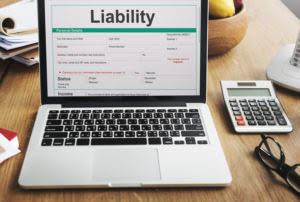
Failing to review these reports regularly can lead to errors in the reconciliation process. Companies can designate several individuals to handle certain aspects of bank reconciliation, and they can complete reconciliations in a variety of ways. The basic sequence, of preparing a bank reconciliation, consists of the following eight steps. The next step is to adjust the cash balance in the business account. Below is a video explanation of the bank reconciliation concept and procedure, as well as an example to help you have a better grasp of the calculation of cash balance. High-volume accounts might have a large number of transactions constantly in transit, so care will have to be taken to ensure the transactions are tracked accurately in your system.
Unrecorded differences may also include direct debits and standing orders that get automatically charged at a specific date. Similarly, they may consist of deposits that other parties deposit into the bank account without notifying the company. Unrecorded items are different from timing differences as the company needs to record these differences in its bank book as well. Therefore, unrecorded differences will have an accounting treatment. Bank reconciliation is a process businesses should undertake each month to ensure that the amount reflected in their bank statements matches their internal business records.
Importance of bank reconciliation in internal control
It is also a good idea to mark any expenses that have already been included in the bank reconciliation statement to avoid any errors. Apart from fraud, bank reconciliation can also help a company detect errors. Performing regular bank reconciliation can help the company identify any issues within its internal processes related to bank transactions that may result in errors. It can, in turn, help the company improve its bank processes and make them more efficient and effective.
- Cash management software allows for scalability, making it easy to streamline the reconciliation process as the business grows.
- This is probably the most important step in the entire bank reconciliation process.
- These accounts should be closed and any recurring debits or deposits should be transferred to more-active accounts.
- One method involves a thorough review of documents and transactions to verify their accuracy and consistency with bank statements.
- These include our visual tutorial, flashcards, cheat sheet, quick tests, quick test with coaching, and more.
- These differences generally comprise two types of items, outstanding checks, and deposits in transits, also known as outstanding lodgments.
- But there are some challenges you may face that can complicate things.
However, with today’s online banking a company can prepare a bank reconciliation throughout the month (as well as at the end of the month). This allows the company to verify its checking account balance more frequently and to make any necessary corrections much sooner. At first glance, you can see that the June ending bank statement balance and check register balance don’t agree.
Order To Cash
In your ledger balance, be sure to account for deposits that have yet to clear, as well as checks you’ve written that have yet to be cleared by the bank. The end result is the bank reconciliation adjusted cash balance, which ensures your ledger balance matches the bank statement balance. Check if the bank deposits and withdrawals match the records on the balance sheet.
There are bank-only transactions that your company’s accounting records most likely don’t account for. These transactions include interest income, bank deposits, and bank fees. Sometimes your current bank account balance is not a true representation of cash available to you, especially if you have transactions that have not settled yet. If you’re not careful, your business checking account could be subject to overdraft fees. As mentioned above, the process of comparing your cash book details with the records of your business’ bank transactions as recorded by the bank is known as bank reconciliation. The purpose behind preparing the bank reconciliation statement is to reconcile the difference between the balance as per the cash book and the balance as per the passbook.
What Is a Bank Reconciliation Statement, and How Is It Done?
Further, make sure that the bank’s statement for the current month has also been obtained from the bank. You first need to determine the underlying reasons responsible for the mismatch between balance as per cash book and passbook. Once you have determined the reasons, you need to record such changes in your books of accounts. Such a time lag is responsible for the differences that arise in your cash book balance and your passbook balance.